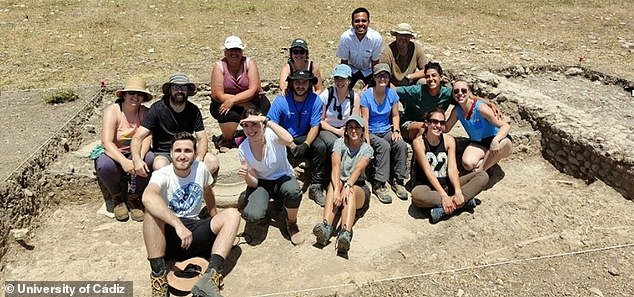Archaeologists accidentally discover ‘hidden kingdom’ after finding long-lost Roman city
Archaeologists in Spain have discovered ancient Roman settlements that could be the site of a ‘hidden empire’.
The team had hoped to discover at least one settlement in Spain’s Sierra de Cádiz region when the project started in 2023, but they were shocked to find 57 Roman-era sites that showed “unprecedented features”.
The researchers believe that the newly discovered settlements were all connected by trade and communication routes in the region.
They are currently conducting a second phase of research to better understand how the sites are connected. This is the first time that the ancient Roman settlements in the area have been extensively analysed.
Researchers in Spain have discovered ancient Roman settlements that could be the site of a ‘hidden empire’

The team found 57 Roman Empire sites of an ‘unprecedented nature’ near the middle valley of the Guadalete River
Researchers from the University of Cádiz in Spain focused on settlements in the areas around Arcos de la Frontera, Bornos, Villamartin and Puerto Serrano. These were all said to be connected by the Guadalete River, leading them to suspect that they were part of a hidden empire.
The team said they used georadar, a tool that sends radar pulses underground to detect hidden objects.
They used georadar technology to locate the wall structures of ancient dwellings that were not visible from the Earth’s surface.
In May, Macarena Lara and her team began excavations at the Roman villa El Canuelo in Bornos, hoping to discover the region’s archaeological heritage.
The researchers discovered that the villa had walls that separated the living and working areas. They tried to determine how and when the middle valley of the Guadalete was formed.
They were also able to investigate other locations for the first time since their discovery in the 1980s and 1990s using multispectral cameras, which allow them to capture images and colors that are normally invisible to the naked eye.

The researchers used georadar technology to locate the wall structures of ancient dwellings that were not visible from the surface

The Romans settled along the Guadalete River after conquering Spain in 264 BC, but researchers have not yet confirmed when the newly discovered structures were built
According to the researchers, these findings could help to better understand the presence of the Roman Empire in the Guadalete River valley more than 2,000 years ago.
“The aim is to gain insight into the interaction between the Bay of Cadiz and the settlement of the Guadalete river depression during the Roman period, an aspect that has been virtually unknown until now,” the researchers said in their report.
The Romans settled along the Guadalete River after conquering Spain in 264 BC. However, researchers have not yet been able to confirm when the newly discovered structures were built.
“The data we have will allow us to generate a solid base of archaeological information and documentation that will allow us to continue research in this area in the coming years,” Lara, a professor of archaeology at the University of Cádiz, said in a statement.
‘Our main objective is to continue carrying out excavations and investigations using non-traditional techniques and tools. These will be complemented by studying the contexts found. We will also analyse techniques on the documented materials. This will allow us to obtain a holistic view of the Roman settlement and the area around the Bornos and Arcos de la Frontera reservoirs.’
